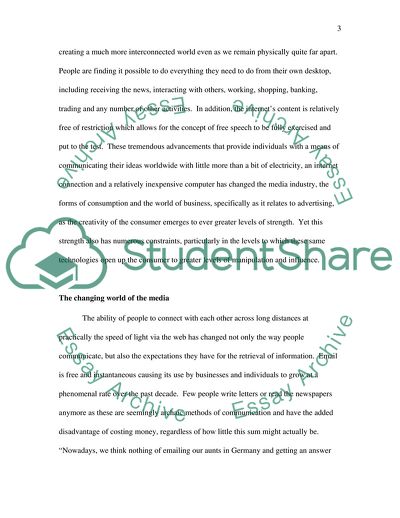Cite this document
(The Creativity of Consumption and Its Constraints Case Study, n.d.)
The Creativity of Consumption and Its Constraints Case Study. https://studentshare.org/media/1708291-how-can-consumption-be-creative-and-what-constraints-affect-consumer-creativity-discuss-using-examples
The Creativity of Consumption and Its Constraints Case Study. https://studentshare.org/media/1708291-how-can-consumption-be-creative-and-what-constraints-affect-consumer-creativity-discuss-using-examples
(The Creativity of Consumption and Its Constraints Case Study)
The Creativity of Consumption and Its Constraints Case Study. https://studentshare.org/media/1708291-how-can-consumption-be-creative-and-what-constraints-affect-consumer-creativity-discuss-using-examples.
The Creativity of Consumption and Its Constraints Case Study. https://studentshare.org/media/1708291-how-can-consumption-be-creative-and-what-constraints-affect-consumer-creativity-discuss-using-examples.
“The Creativity of Consumption and Its Constraints Case Study”. https://studentshare.org/media/1708291-how-can-consumption-be-creative-and-what-constraints-affect-consumer-creativity-discuss-using-examples.


